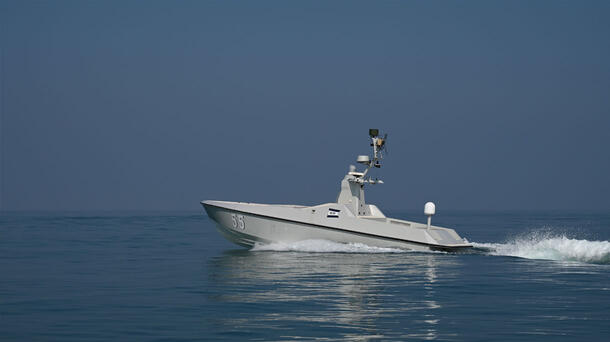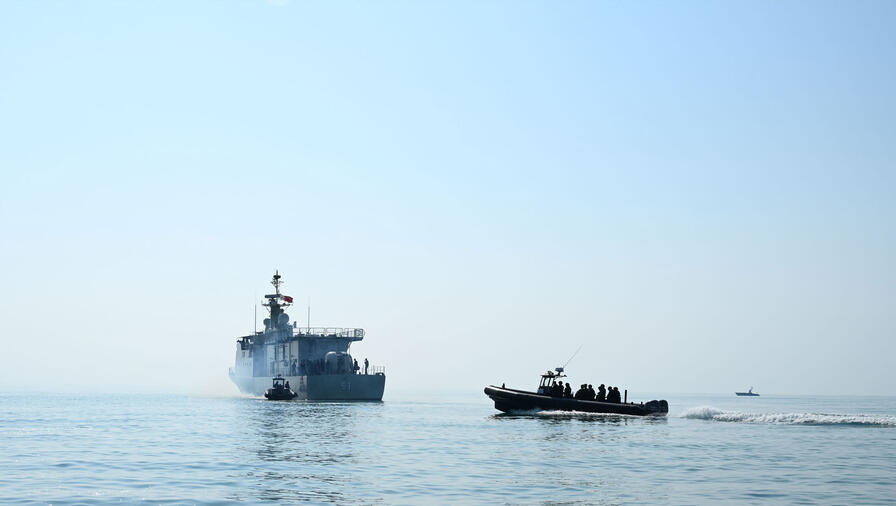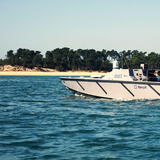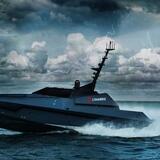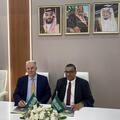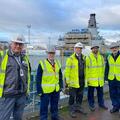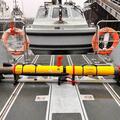L3Harris’ autonomy technology permits platforms to have a manned, remote and autonomous operation capability all on one vessel – providing significant benefits to the warfighter. Platform and payload autonomy plays a vital role in the future of naval operations that support Distributed Maritime Operations (DMO). The value to the warfighter stems from the multiple mission packages with the autonomous coordination between the various payloads, distributed platforms and manned assets. The addition of hull, mechanical and electrical (HM&E) autonomy, which allows control and routine operations of systems such that they can support extended operations at sea, adds increased endurance and cost advantages.
L3Harris' autonomous capabilities are designed to operate across multi-domains delivering advantages to operations in highly contested environments where manned operators are at risk. L3Harris’ autonomous endurance vessels integrate state-of-the-art payloads that are being developed to detect and track the most challenging threats. L3Harris’ proven capabilities and real-world maritime mission experience prove autonomy’s value in filling today’s operational gaps by decommissioned patrol and mine warfare craft.
The true offset, however, comes through the implementation of artificial intelligence and machine learning (AI/ML) to deliver the mission and situational awareness that maximizes the functionality, safe operating ability and effectiveness of autonomous platforms.
Autonomy is only as capable as the AI and ML that are created. Those vessels that employ AI/ML will evolve, to learn the right behaviors in real-time, to better suit the mission – whether that be transiting more safely, providing more effective kinetic delivery or providing better intelligence, surveillance and reconnaissance (ISR). L3Harris has teamed with the Navy’s best AI/ML providers to deliver this performance capability.

HOW WE EMPLOY AUTONOMOUS SYSTEMS
Autonomy takes many forms and can span from simple decision-aid support to incredibly complex AI/ML algorithms that modify autonomous behavior in real-time. In the near term, autonomy’s value can fill today’s operational gaps in performing 3D activities. When assigned to an unmanned, or optionally manned platform, these activities can often be performed at higher efficiencies, with significantly lower costs and less risk to human life than a traditionally manned platform.
AI/ML analytics will process the higher volumes of data needed to make better decisions as the computing power detects the anomalies that human operators cannot observe in real-time. Analytically recognizing trends and anomalies will help determine patterns of life that provide better decision-making through combat identification or adversarial intentions and warnings. Autonomous surface and subsurface vessels provide an affordable alternative for combating some of the common threat behaviors and tactics employed by maligned actors.
Additionally, L3Harris’ advanced computing power will enable high-speed reconnaissance and remote surveillance capabilities for unmanned platforms that frees up higher-end assets for other important mission sets.
The core of each delivered ASV is the ASView™ control system that uses proven data fusion of installed sensors to analyze, look ahead and safely navigate autonomously. ASView is a proven technology that provides autonomous collision avoidance in accordance with International Regulations for Prevention of Collision at Sea (COLREGS) and navigation for power-driven vessels that are years ahead of the competition in terms of capability, functionality and modularity. L3Harris’ advanced software algorithms provide reliable collision avoidance in highly congested waters while also providing enough advanced warning of pending threats for timely human responses.
L3Harris payload data is part of a greater open architecture design with internet protocols and data services that are ingestible by AI/ML providers and most Navy program-of-record data fusion engines.
ASView fuses all inbound perception data together while considering the accuracy of each device to develop a complete and accurate view of the vessel's surroundings. This fused data is then used to identify and classify contacts according to their characteristics. The data determines the current location of these contacts and can predict where these contacts will be over various time horizons based on the continuous collection of historical data. This situation awareness software can be used for a variety of levels of autonomy from fully autonomous operations or simply as a decision aid to an operator.

PROVING THE VALUE OF AUTONOMOUS VESSELS FOR MUM-T
Over the past year, L3Harris has worked closely with our partners, most notably the U.S. Navy’s Combined Task Force 59, to exercise manned-unmanned teaming (MUM-T) with the delivery and performance of autonomous surface vessels and their extended capabilities. Task Force 59 (TF 59) is the first U.S. Navy task force of its kind, created to integrate unmanned maritime systems and artificial intelligence capabilities in the Navy’s 5th Fleet area of operation. L3Harris’ Arabian Fox autonomous surface vessel (ASV) has been a leading interceptor platform that has gained the trust of warfighters’ using autonomy over remote control platforms.
Arabian Fox has served a key role in defining the concept of operations and requirements as the Navy operationally deploys autonomous unmanned technology. The deployment of L3Harris’ ASV technology as part of TF 59’s mission demonstrates the value of autonomous vessels for maritime operations and unmanned ISR missions and enabling DMO. Foundational to this is operating manned-unmanned teaming on platforms enabled by autonomous mission and situational awareness payloads. Platform and payload autonomy plays a vital role in the future of naval operations that support DMO.
L3Harris’ field service representatives, engineers and former small-boat operators have been maintaining and operating Arabian Fox, training TF 59 sailors on Arabian Fox operations and demonstrating the value of autonomy while executing real world maritime operations. Arabian Fox integrates additional L3Harris technologies already used by the U.S. Navy, including the WESCAM MX™-10MS maritime electro-optical and infrared imaging system and Falcon tactical communications radios. Arabian Fox will enable greater lethality, readiness and survivability by providing reliable command and control, communications, cyber ISR capabilities without the risk of having sailors operate in harm’s way.
Arabian Fox led the way in Digital Horizon, where TF 59 created a Naval Operating Architecture meshing line-of-sight communications system with Arabian Fox operating over-the-horizon while passing full motion video back to a command center to integrate into a common operating picture.
The demonstration was valuable as it allowed the pairing of autonomous technologies with crewed ships and planes. During Digital Horizon, L3Harris Arabian Fox supported TF 59’s ability to close the ISR targeting chain for tracking, where uncrewed systems were able to partner with crewed vessels and communicate with each other over a MESH network. The Arabian Fox unmanned vessel further enhanced situational awareness by giving warfighters high resolution EO/IR sensing and tracking for AI/ML software modeling capabilities that would inform decision makers on how to deploy manned assets.
Following Digital Horizon, Arabian Fox participated in the Neon Defender 2023 exercise in the Central Arabian Gulf. Neon Defender is an annual bilateral training event between the U.S. Naval Forces Central Command and Bahrain that focuses on maritime security operations and the installation of defense medical response. During Neon Defender, Arabian Fox was commanded and controlled onboard USS Monsoon, conducting a Visit Board Search & Seizure (VBSS) exercise. This was a first of its kind for MUM-T operations.
During the VBSS evolution, Arabian Fox served as a force protection “overwatch” to the VBSS team with command and control on board USS Monsoon demonstrating manned-unmanned teaming.
And most recently, Arabian Fox just wrapped up participating in the Middle East region’s largest maritime exercise, International Maritime Exercise (IMX) 2023, which kicked off its operational phase on March 2 in Bahrain. IMX 2023 is an 18-day naval training event hosted by U.S. Naval Forces Central Command. The combined exercises include 7,000 personnel, 35 ships and 30 unmanned and artificial intelligence systems from more than 50 nations and international organizations. The exercise is designed to demonstrate global resolve in preserving the rules-based international order, offering a unique opportunity for participants to collaborate and showcase regional maritime security cooperation.
Arabian Fox is just one example of a mission-ready and operational ASV to join the more than 125 L3Harris-produced ASVs and optionally manned vehicles engaged in a variety of military, security, offshore energy and scientific missions. With expertise in platform concept design, construction, operations maintenance, and scalability, L3Harris provides premier ASV solutions to defense and commercial customers around the world.
